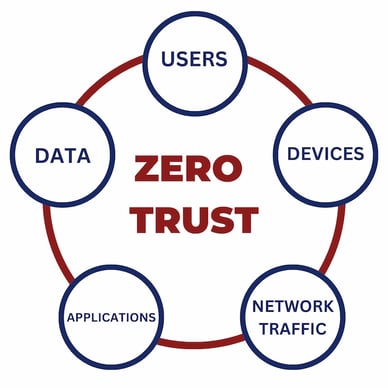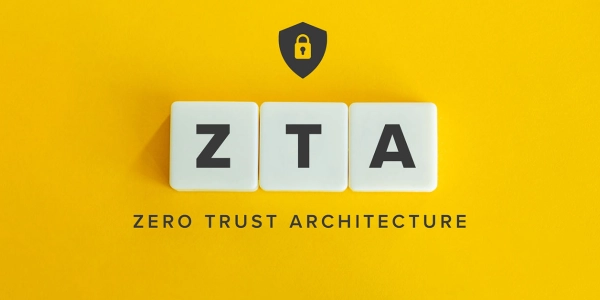What is Zero Trust Security?
Zero Trust security is a security model that assumes all devices, users, and applications on a network are potentially compromised. The Zero Trust or no trust architecture is designed to minimize risk by providing access only to those who need it, and only when they need it. This means that every access request must be verified and authorized, regardless of whether the request is coming from inside or outside the network. Due to the level of protection it provides, Zero Trust networks are being widely adopted, and it's something your organization should consider as well.
If you're more of a visual learner we've provided this quick and easy-to-follow video: Zero Trust explained.

Why is Zero Trust Security Important?
The traditional IT security model is based on the idea of a perimeter, where a firewall is used to keep the bad guys out of the network. However, this model is no longer effective because attacks can come from anywhere, including from within the network. For example, a user's computer could be compromised by malware, and that malware could spread to other devices on the network.
Zero Trust IT security is important because it assumes that no one can be trusted, and every access request must be verified and authorized. This means that even if a user's device is compromised, the attacker will not be able to access other devices on the network without proper authorization.
How Does Zero Trust Security Work?
Zero Trust IT security works by implementing a set of security controls that are designed to verify and authorize every access request. These controls include:
-
Multi-Factor Authentication (MFA): This is a security process that requires users to provide multiple forms of identification before they are granted access to the network. For example, a user may need to provide a password, a fingerprint scan, and a smart card.
-
Network Segmentation: This is the process of dividing a network into smaller, more secure segments. Each segment has its own set of access controls and is isolated from other segments.
-
Least Privilege Access: This is the practice of providing users with the minimum amount of access they need to perform their job functions. This reduces the risk of a user accidentally or intentionally accessing sensitive data.
-
Continuous Monitoring: This is the process of constantly monitoring the network for unusual activity. This can include monitoring for unusual login attempts, unusual network traffic, or other suspicious behavior.
-
Encryption: This is the process of encoding data so that it cannot be read by unauthorized parties. This can include encrypting data at rest (on a server or storage device) and data in transit (while it is being transmitted over a network).
The Zero Trust model provides a more effective approach to security than the traditional perimeter-based model, and can help organizations better protect themselves against cyber attacks. By implementing a set of security controls such as MFA, network segmentation, least privilege access, continuous monitoring, and encryption, organizations can create a more secure IT environment. Learn How to implement a Zero Trust architecture in this blog: Your Zero Trust Implementation Plan for Enhanced Cyber Security.

